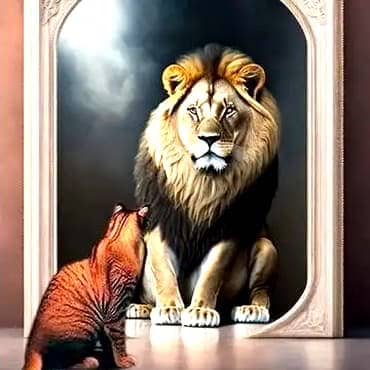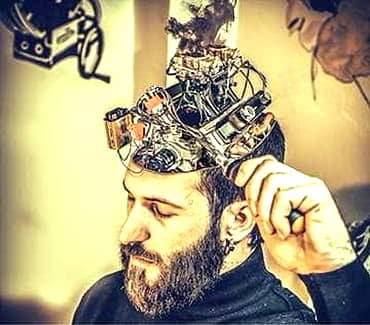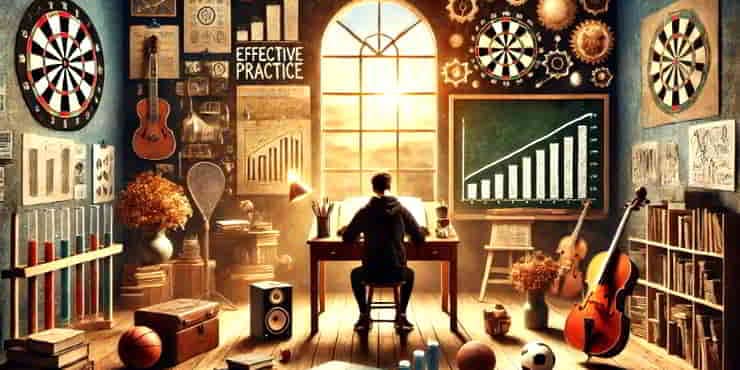What Self-Image Is & Why It Shapes Your Success

Estimated reading time: 7 Min
Your inner picture defines your outer results. Learn how self-image affects decisions, confidence, and your business outcomes.
Dr Maxwell Maltz outlined a way of thinking about the mind in his book “Psycho-cybernetics”, which was first published in 1960.
Of the concept of “self-image” he stated:
“It may not be consciously recognisable but it is there, down to the last detail. Self-image is our own conception of the “sort of person I am”. It’s been built up from our own beliefs about ourselves”
Here I outline what self-image is about, and its importance.
What Is Mindset?
The Doctor’s excellent book, sold in excess of 30 million copies before an update by Dan Kennedy, published in 2001 and a second by Matt Furey (president of the Psycho-cybernetics Foundation) published in 2015.
Dr Maltz was a cosmetic surgeon whose ideas were based on his observations of people who were either considering having cosmetic surgery or had undergone a cosmetic operation. Over the years, his ideas have gained much support through modern science.
What Self-Image Is About
Dr Maltz uses the analogy of a (personal) blueprint to describe what he means by self-image.
When you look at a blueprint (or a plan) of a house, you can see how the house is structured.
An expert builder can make decisions about how to go about building that house. E.G. you can see how big a house will be, how many levels it will have, how many rooms, and all the precise measurements, before actually building it.
Personally, I think this analogy is close, but with one difference.
Certainly, a self-image is a little like a blueprint of a person’s personality and behaviours. I.E. if a person’s self-image can be revealed at any particular time, their personality and behaviours can be predicted at that time.
However, a blueprint of a house is created and usually agreed to (signed off) before the house is built, while a person’s self-image develops as that person experiences life and it dynamically changes over time.
The importance of your self-image, should not be underestimated; it plays an enormous role in life and drives everything you do, whether you are aware of it or not.
The Importance Of Self Image
Dr Maltz highlights two main points in respect to what self-image is about:
- Everything that you do and feel (how you behave) is always consistent with your self-image.
- The self-image can be changed; you can program it if you choose.
On the first point, people who hold certain beliefs about themselves such as ‘I am ugly’, act in alignment with that thought.
They tend to wear clothes and style their hair in ways that make them feel even less attractive. Their self-image of ‘I am ugly’ leads them to act as if they are ugly.
Dr Maltz’s second point, that the self-image can be changed, is the primary purpose of his book.
Psycho-Cybernetics provides the tools for making changes to self-image. When you make changes, everything about you, inside and out, will change in alignment with your new self-image.
Positive Thinking Versus Changing Your Self Image
Changing the self-image is very different from just thinking positively or using willpower.
Dr Maltz suggests that thinking positively or willpower is similar to putting on new clothes.
New clothes feel good when first worn but the effect is temporary.
More recent research indicates that willpower is essentially a conscious mind activity that disappears when we sleep.
Therefore will power has to be regenerated each day.
In order to make a permanent change, you must change your self-image within your subconscious mind.
The Subconscious Mind And The Servo Mechanism
So far so good. Now at the risk of creating some confusion (if you read to the end it will become clearer) …

Dr Maltz came to believe that the subconscious mind, in combination with the nervous system, acts as a ‘servomechanism.
A servomechanism is a control mechanism that delivers a defined outcome, and to function correctly it is dependent on and reacts, to feedback.
A thermostat is an example of a servomechanism in your home.
A thermostat first needs to be set correctly to achieve a temperature of choice.
When set correctly temperatures are comfortable.
When set incorrectly, temperatures will be too hot or too cold for comfort.
Once it is given a specific target temperature to achieve, the thermostat turns the heating on if the actual temperature is too low, or off if the actual temperature is too high.
Dr Maltz came to the conclusion that the function of the human subconscious servomechanism is what he called an ‘automatic goal-striving machine’ that is directed (or programmed) by the will of the conscious (creative thinking) mind.
The Subconscious And Conscious Mind Working Together
So, simplistically perhaps, it is useful to think of our achievements (whether successful or not) as the result of a functional, if slightly awkward cooperation, between the two major parts of our mind.
A collaboration between our conscious ‘creative thinking’ mind with the subconscious ‘goal-striving machine’.
A goal-striving machine needs clear goals and objectives.
Dr Maltz surmises that our subconscious goal-striving machine operates automatically, and what it achieves in anything is a reflection of the clarity of the goals and objectives that it holds.
So what we achieve in anything reflects the clarity of the goals and objectives that our conscious mind communicates to our subconscious mind over time.
Our challenge then is to make sure that the goals and objectives followed by our goal-striving machine (subconscious mind) consistently reflect what we truly want to achieve.
The problem is that our goal-striving machine has been programmed over time (by ourselves from our own experiences and with much input from others) with a multitude of values, beliefs and goals.
The thing is that not all of them serve us well, and many conflicts with others.
Subconscious ‘programming’ deserves more of an explanation and will be the subject of a future post.
The sum total of your values, beliefs and goals, held by the subconscious ‘goal striving machine’ is what Dr Maltz calls ‘self-image’.
I believe that when we talk about mindset, ego, or id, we are referring to the same set of values and beliefs.
Such pre-formed guidance, if not congruent with our current consciously created goals, creates interference with our conscious intentions.
It drives our subconscious actions and conscious thinking. This in turn leads to outcomes that are often not what we consciously intend.
Update Your Self-Image With Conscious Imagination
A quick diversion here … the ‘cute’ image of the cat, seeing itself in the mirror as a lion, may at first be perceived as desirable and makes a useful point about the power of self-image.

However, the cat cannot physically develop the power of a lion.
If the cat tried to live like a lion in the wild, it would probably not survive for long.
If the cat is not aware enough to know that it doesn’t possess and cannot develop the power of a lion, it could get itself into a lot of trouble.
So this is just an example of incongruence; for a cat, the ‘goal’ of becoming a lion is physically impossible.
However, there is a lot to be said for “stretch goals” (goals that are stretched in the imagination).
Many human break throughs have arisen from a big stretch of the imagination.
If as a human you want to achieve something that other humans have achieved or that is a reasonable stretch, it is possible, to improve your chance of achieving what you want, by learning first how to change (improve) your self-image.
Achieving such a change needs active use of your conscious imagination to influence and reprogram aspects of your subconscious mind.
Dr Maltz calls your powers of conscious imagination the ‘Creative Mechanism’.
Therefore, the ultimate goal of the Creative Mechanism is to create and maintain your self-image.
You can consciously use the Creative Mechanism to combine internally stored memories with new external stimuli in order to improve the image.
In other words, the Creative Mechanism is a servo-mechanism that is directly under your control, if you choose, and that you can use to program your goal striving machine.
Summary Of What Self-image Is About

Your self-image is the sum total of your subconscious values and beliefs, which collectively control everything that you do.
Understanding what self-image is about is key to being able to control your own behaviours and outcomes.
If you choose, you can learn to deliberately and creatively use your conscious imagination to update your subconscious self-image. This leads to the formation of new automatic reaction patterns (habits) designed by you, to serve you.
The imagination skills involved are no different (as pointed out by Dr Maltz) than being able to recall past memories, such as tying shoelaces.
If you can remember and act out in your mind, doing something as simple as tying shoelaces, in detail (experiencing what you see, hear and feel), you can creatively act out and develop a new action pattern in your mind until it becomes second nature.
The Psycho-Cybernetics book outlines 12 core lessons for defining and achieving goals.
In addition, if you are want to learn more about the brain go here for an empowering way to improve brain power,
If you have any questions, please reach out, add a comment or use the contact form.
If you think others might find it useful, please share…
🙂
Richard







You rocked this subject and have astounding insights. I also work hard in putting together great content about Website Traffic, feel free to visit Webemail24
Thank you for reaching out, Felix. I believe that understanding the way our minds work is a fundamental responsibility we have.
Very interesting post! I think that a lot of outside input influences how we perceive our self image. If our parents always build us up as children we will naturally be more confident about ourselves but if parents (and or other relatives) always or often put us down and remark on our shortcomings, we will eventually end up believing that. It will then take a lot of work on ourselves to improve our own self image again.
I have heard about the conscious and subconscious mind working together. There are tapes or apps you can play at night before falling asleep, their messages will sink into your subconscious mind while you sleep; I don’t know much about it, but I would like to try that out. Do you have any articles about that too?
The book sounds certainly interesting, and I’m amazed how many copies it has sold. It has to be good then!
Thank you Christine for your response to my post about Psycho-cybernetics. Personally, I do not believe playing sound once asleep actually works. I would recommend staying awake while creating an altered state. I do use various apps and recordings myself. I will put together a post to share that experience. Thank you for the suggestion.
Hi Richard, Thank you for introducing us in such detail to self-image.
You changed my mind about it.
I like that you shared words from Dr. Maltz about how he compared blueprint and self-image.
Your post is really great and changes your views of the world.I will definitely think a little better about this text you wrote. Very nice and detailed.
Thank you Denis for commenting here and very pleased that you found the post about Psycho-Cybernetics useful. I recommend reading the whole book if you are so inclined. It is available very cheaply on Kindle.
Hi Richard,
This is such a coincidence because I have just started taking the Bob Proctor course “Thinking Into Results” and one of the lessons is about self image. He talks about psycho cybernetics quite extensively too.
I believe self image is so important. We need to know what we want our of life and who we want to become. How we feel about ourselves and how we see ourselves is critical if we want to fulfil our dream and goal in life. I have made a start on writing my self-image script and I have a feeling it is going to be quite long.
I will keep you updated on how it is going and if you can help me with it then I will get in touch, if that is OK with you?
Thank you for sharing and keep up the great work.
All the best,
Tom
Hi Tom. Thank you so much for reaching out. Bob Proctor and the Proctor Gallagher Institute have had a positive impact on many lives. I’d love to hear how your training progresses and hope you feel able to share any insights as they arise. I look forward to further discussion!
This is a fascinating discussion you have opened here about what is self image and psycho-cybernetics. I do think we are influenced by what other people say about us, and to us. This can change our self image for the better or the worse. If I hold somebody in high esteem, their effect on my self image would be greater, than with somebody that is less important to me.
If somebody tells you that you are clever and can achieve something, you feel better about yourself, than when somebody puts you down and you start doubting yourself.
Thank you for reading and commenting. We are naturally influenced by others all of our life, however, the first 7 years or so are the most striking. During formative years our brains and minds are developing and taking in everything at a time when we don’t know enough to evaluate what is useful or not useful to us. I suspect that most so-called good and bad habits are developed at a young age. As Adults, habits, whether useful or not, are probably mostly a result of stimulation at a young age. As adults, society expects us to ‘have our own mind’ whereas in reality most of what we have is from other people until we realise we do indeed have control!:-) Richard
Thank you Richard B, for an insightful article. There so much that we do not know about ourselves. To see a glimpse of who we are and who we can be is a revelation of great proportion. Self-Image is now so important but many have lost that desire to maintain a positive self-image and they are not aware that they might have given up on their capacities and Successful being.
Learning that it can still be relearned to become positive and yield great results is reassuring.
Thank you for revealing this to us.
Ntlhane
Hi NtlhaneThank you for your comment here. Yes, it is a revelation to most people when they discover they can have a large degree of control of their mind and resultant mindset (values and beliefs) with a little work. I know it was for me when I first came across these things in the late 1970s.:-) Richard
I believe we build our self-image by drawing upon many other people in our lives and how we feel and think about them. We take from some and not from others. We’re very selective. Even from those we take, we don’t take the same amount. We take much from some and little from others. We learn the way we come to think of ourselves by our associations and how we imitate those we admire.
Thank you for your enlightened comment, Abel. Since mindset is composed of all our values and beliefs, wherever they have come from, such a belief as yours is very useful. Most people don’t realise this however, until it is pointed out to them.You describe the ideal World which is possible for adults especially. Children however, are much more influenced by all kinds of inputs from others and from their own imaginations. Most adults are nowhere near as selective as they could be either.